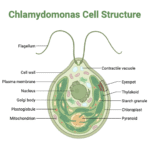Basic Microbiology 15 Views 1 Answers
Sourav Pan🥇 GoldSeptember 4, 2024
Compare the following : (i) Sabin and Salk polio vaccine (ii) Active and Passive immunization.
Compare the following : (i) Sabin and Salk polio vaccine (ii) Active and Passive immunization.
Please login to save the post
Please login to submit an answer.
Sourav Pan🥇 GoldMay 15, 2025
(i) Sabin vs. Salk Polio Vaccine
Sabin Polio Vaccine (Oral Polio Vaccine, OPV):
- Type: Live attenuated vaccine.
- Administration: Oral.
- Immunity: Stimulates both systemic and local (intestinal) immunity. Provides good community immunity because it can be spread from person to person.
- Benefits: Easier to administer (oral) and usually less expensive. Can lead to herd immunity as it spreads through the community.
- Risks: Rare risk of vaccine-derived polio (VAPP), where the weakened virus in the vaccine can mutate and cause disease.
Salk Polio Vaccine (Inactivated Polio Vaccine, IPV):
- Type: Inactivated (killed) vaccine.
- Administration: Injection.
- Immunity: Primarily stimulates systemic immunity (protection in the bloodstream). Less effective at stimulating local immunity in the gut.
- Benefits: No risk of vaccine-derived polio. Safe and effective in preventing polio.
- Risks: More expensive and requires injections, which can be less convenient. Does not contribute to herd immunity as effectively as the OPV.
(ii) Active vs. Passive Immunization
Active Immunization:
- Definition: The process by which exposure to a disease triggers the immune system to produce antibodies and develop immunity.
- Method: Typically achieved through vaccination (e.g., with live attenuated, inactivated vaccines) or through natural infection.
- Duration: Generally provides long-lasting immunity, often years or even a lifetime.
- Mechanism: The body’s immune system learns to recognize and fight the pathogen if encountered again in the future.
Passive Immunization:
- Definition: The process of providing immediate, but temporary, protection against a disease by administering pre-formed antibodies.
- Method: Achieved through the transfer of antibodies from another source (e.g., through antibody-containing blood products, such as immunoglobulins, or from mother to baby via the placenta or breast milk).
- Duration: Provides short-term protection, typically lasting a few weeks to a few months.
- Mechanism: The immune system does not learn to recognize the pathogen; it relies on the external antibodies for protection.
0
0 likes
- Share on Facebook
- Share on Twitter
- Share on LinkedIn




